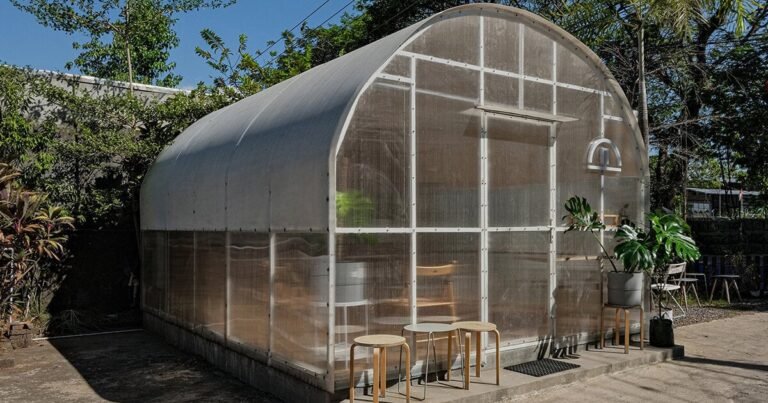pARC Installation / The Urban Conga
pARC Installation / The Urban Conga


Text description provided by the architects. pARC was designed by The Urban Conga to serve as an open-ended programmable space for the community of Chapel Hill and the Ackland Art Museum located at the University of North Carolina. The Urban Conga studio designed the spatial intervention through a series of participatory design workshops with community stakeholders and museum representatives. pARC was designed to sit on the open terrace of the museum to serve as a bridge to connect the museum to the street.


Serving as a programmable extension to the conversations, events, teachings, and programming that currently exists within the doors of the Ackland. The design shows how play can be utilized as a tool in the democratization of art institutions by taking art off the pedestal and allowing people to take ownership of the work and space. It invites people up off the street and into the museum that might have once never felt comfortable entering the space. The installation becomes a transformative communal platform for all users to engage with the museum, university, and each other in new ways.


The design of pARC both mimics and contrasts the Georgian-style architecture of the museum. The design takes this symmetrical colonial composition and breaks it into a series of interconnected arcs. These series of arcs appear to grow up from the ground to frame out various social spaces that allow the users to put their own identity onto the work, the museum, and the surrounding space. pARC becomes a flexible communal space evoking endless ways to play, gather, perform, teach, converse, or even take a nap.



The spatial gesture takes on its user’s identity and utilizes its playable design to break down social barriers and spark communal connection within the space. The color of the work was designed in coordination with the rebranding of the Ackland to help draw people into the museum and serve as a connector to their new brand and mission. The work utilizes universal design standards to make it an inclusive space that anyone can use. Underneath the grass sits a sustainable mesh that allows for wheelchair accessibility within the space while still allowing the grass to grow up through it.


Each archway serves as a framed or reflective view of the surrounding context that allows the user to look at the area through a different lens. As one passes the work, they begin to realize their movement changes the colors of the panels sparking different filtered views of the context around them. The installation not only responds to the user but also the environment by reflecting and refracting the surrounding context through its dichroic lenses while also casting shadows onto the ground and the panels themselves.


The work utilizes light both during the day and at night as a tool to evoke play and wonder into the space. During the day, the user can interact with the sun to cast shadows onto the panels or shift the colors reflected within the space. This interaction sparks a connection between the person and the sun and shows how their actions begin to create a reaction within the space. At night this same effect is created through the use of red, green, and blue lights that allow the user to color mix with their shadows on the panels. The shadow play on the work becomes another way that the user can begin to play with the work, space, and others.







